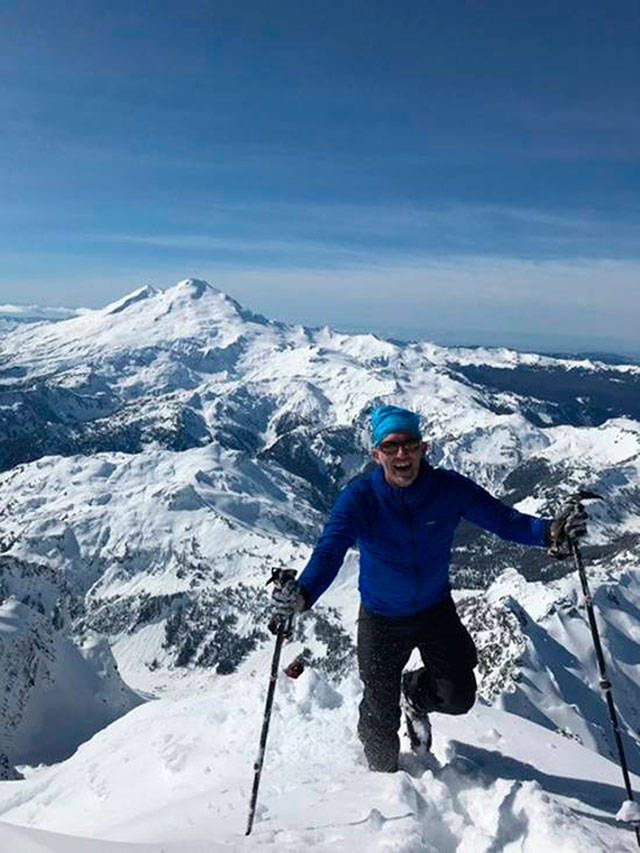The following was written by MultiCare Health System:
Blessed with thousands of hiking options — from easy walks to summiting mountain peaks — we Northwesterners like to think of ourselves as intrepid outdoors folk, heading off confidently into the wilderness for day hikes of all sorts.
But the truth is many of us are novices or hike infrequently. Even experienced hikers get into trouble from time to time. Preparation and common sense can make the difference between enjoying a great day or getting injured or lost, says expert hiker Jacob Swan, PA-C.
Swan is a physician assistant in the Family Medicine department of the MultiCare Kent Clinic. He’s also an avid hiker, mountaineer and volunteer member of Seattle Mountain Rescue.
We sat down with Swan to get his tips on safe hiking.
What are your recommendations for choosing a day hike?
Swan: Do your homework about the trails, understand the maps. Don’t overestimate what you can handle. You can find detailed description of hikes through the Washington Trails Association website, which match any skill level. There are plenty of guidebooks available too. Mountaineers clubs and outdoor stores are also great resources. Joining a group hike or a club can be a great way to get started and build your confidence.
Before people set out, what is your first piece of advice?
Swan: Tell family members and friends exactly where you are going, down to the trailhead location, how long you will be out and when you expect to return. Don’t forget to check the weather, too.
What supplies should you bring on a day hike?
I refer people to what’s known as the 10 Essentials. These include a map, first aid kit, water, food, knife, sunglasses/sunscreen, extra clothing, rain gear, a knit cap for warmth and a brimmed hat to protect from the sun. I also recommend that hikers carry a GPS device, which you can buy at outdoor stores or online, and a lighter or waterproof matches in case you need to light a fire to stay warm. The 10 essentials can be tailored according to the intensity of the hike.
Wear waterproof shoes, with traction on the bottom and mid-level or ankle-level support. Don’t wear worn out shoes or flip flops. I also recommend hiking poles. They provide stability on our trails that are often full of tree roots and rocks. Poles also take pressure off knees.
And of course, bring your cell phone to take pictures of the gorgeous views. But don’t rely on having cell phone service everywhere.
How much water and food should you bring?
Generally, plan on a half a liter of water per hour per person for moderate activity in moderate temperatures (this may vary based on exertion, temperature and other factors). Good snacks are trail mix, fruit, cheese. Avoid sugary foods.
In your work with Seattle Mountain Rescue, what are some of the situations you encounter?
We see everything from sprained ankles, cuts, leg and back fractures, to, unfortunately, heart attacks and people falling off cliffs. We’ve rescued people who have been lost in the woods and have had serious exposure to the elements, whether heat or cold.
How should people prevent getting lost?
Make sure you have a map of your hiking location. A printout of the trail description can also be helpful. Stay on well-marked, designated trails, and avoid the temptation to go off-trail even if it appears to be just a short detour.
For more experienced hikers on more remote trails, this is where the GPS device comes in. There are apps you can use, but because cell phone service isn’t always available, it’s better to have a device. I recommend checking your route on your GPS device every 10 minutes or so to make sure you are still on the trail. Of course, on very popular, well-marked hiking trails, that’s usually not necessary.
What should you do if you get lost?
If you do have cell service, send out a text to a family member or friend, telling them you are at X location according to your GPS device. Call 911. Try to get back to the last place on your GPS route. If you are unable to contact anyone, and/or you don’t have a GPS device, follow the STOP recommendations by the U.S. Forest Service.
What are the signs of heatstroke and how should you prevent it and treat it?
Symptoms include nausea, blurry vision and lightheadedness. To prevent heat stroke, drink plenty of water, take breaks in the shade and wear a brimmed hat. If you do experience these symptoms, find shade, drink water, even sit in a cold stream for a bit to bring your temperature down.
If you are stranded overnight, how do you protect yourself from the cold?
Create warmth any way you can. Get out of the wind, keep your clothes dry, avoid exposed areas, find cover, build a fire. I tell people if you are going to be out for a long hike, plan for temperatures that are 20 degrees lower than expected. Bring more clothes than you need.
What are some of the benefits people get from hiking?Hiking benefits your cardiovascular system, blood pressure, weight control and coordination. Beyond that, it can release stress and anxiety. People fall in love with hiking because they get in touch with nature. It’s calming and restorative. Also, new adventures forge new connections in your brain and give you a sense of accomplishment.
What are some of your favorite hikes?
Locally, I love the Snoqualmie Pass area. I’ve summited Mount Rainier four times. My goal is to summit and ski all 15 peaks in Washington above 9,000 feet. I’ve done about half of them. This is such an amazing, beautiful area we live in. I encourage everyone to get out and enjoy it.
MultiCare Health System is a not-for-profit health care organization with more than 18,000 employees, providers and volunteers.


